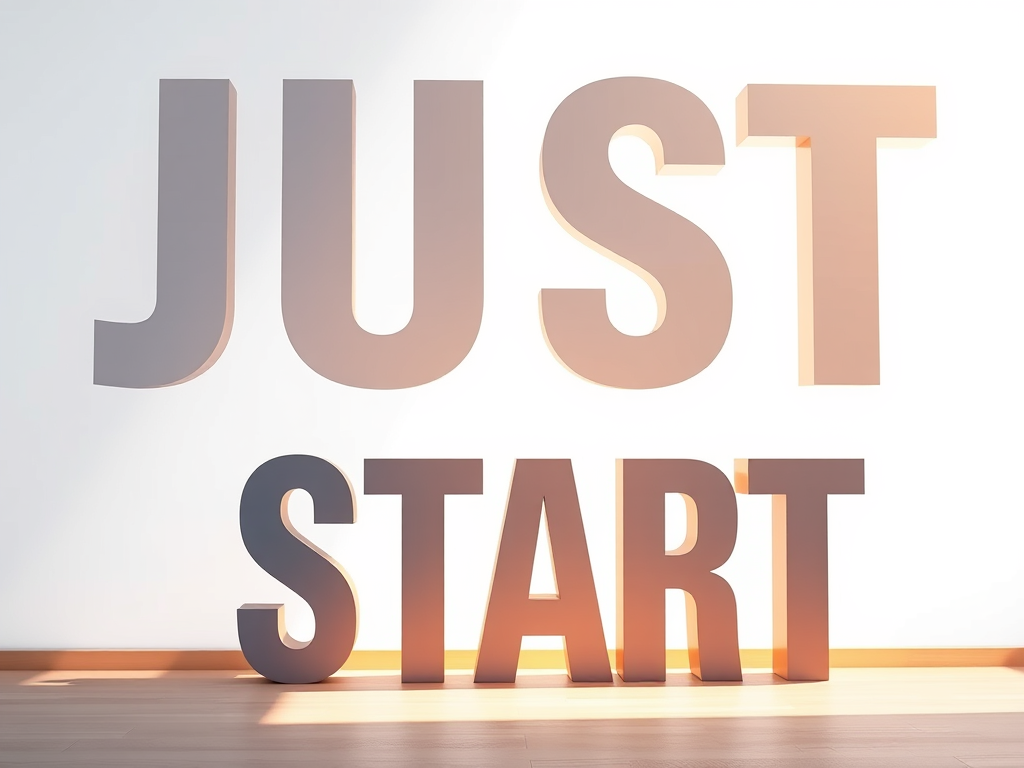A lot of people spend time sitting on a business idea, waiting for the perfect time to launch. They think they need a fancy website, polished branding, a fully mapped-out process, and a million other things before they can begin. If that sounds like you, then this blog is for you.
The Truth About Starting a Business
Here’s the reality: You don’t need everything figured out on day one. What you actually need is to start. Your business should be built based on what your customers actually need—not just what you think they might want. Instead of waiting for perfection, focus on starting and refining as you go based on real feedback.
It’s so easy to get stuck in the planning phase. Trust me, I’ve been there. I’ve convinced myself that I needed a flawless website, detailed business plans, and automated processes before launching. But the truth? Those things can come later. So many people hold themselves back waiting for perfection, but perfection doesn’t pay the bills—clients do. You could spend months building the perfect business infrastructure, but if you don’t have clients, it won’t matter.
The key is to start by serving a need. You won’t truly know what your customers want until you start engaging with them.
Focus on Your Minimum Viable Offering (MVO)
One of the best ways to take action is by focusing on your Minimum Viable Offering (MVO)—the simplest version of your product or service that you can launch with minimal investment.
Ask yourself:
- What is the core problem I’m solving?
- What is the simplest way I can deliver value right now?
For example:
- If you’re a coach, your MVO might be offering 1:1 sessions—without worrying about fancy materials or a website.
- If you’re launching a product, it might be selling a small batch of handmade items directly through social media.
Start with what you have and what you know you can deliver. The goal isn’t to be perfect—it’s to get your offering out there and see how people respond.
Engage With Real Customers
Once you’ve identified your MVO, start engaging with potential customers. Reach out to people in your network who might benefit from what you’re offering. Let them know what you’re working on and how you can help.
At this stage, don’t worry about making everything perfect. Instead, focus on starting conversations and offering value. You’ll be surprised how much you learn just by talking to people. Pay attention to their feedback:
- What are they asking for?
- What challenges are they facing?
- What aspects of your offering resonate the most?
When I first started, I didn’t have a website or any sort of booking system. Instead, I reached out to people, asked about their experiences, their challenges, and their perspectives. I wanted to understand what platforms they used for advice and what had helped them in the past.
At the end of those conversations, if I had already provided value to them before, I asked for feedback on how they interpreted my coaching. Through these conversations, I got valuable insights and generated interest in my business. In fact, that’s how I landed my first client—just by doing market research and talking to people.
Let Customer Feedback Guide Your Next Steps
Once you start getting clients or generating interest, let customer feedback determine your next move. Instead of planning every detail upfront, take small, incremental steps based on what people are actually asking for.
For example:
- If potential clients keep asking, “Do you have an Instagram?” or “Do you have a website?”—then that’s when you consider creating one.
- If you’re a personal trainer and clients start requesting online sessions, that might be a sign to invest in virtual coaching.
- If people request meal plans, that could be your next priority.
Your business should evolve based on real feedback—not assumptions. Of course, if there’s something you’re passionate about, go for it! But don’t stress over things that aren’t a priority for your customers.
Avoid Getting Stuck in Endless Planning
One of the best ways to keep yourself moving forward is to set deadlines for action. Give yourself a date to:
- Reach out to your first potential client
- Launch your first offering
- Post your first product online
Focus on progress over perfection. Deadlines create momentum, and once you take that first step, the next one becomes much easier.
Track Your Progress and Adjust As You Go
As you start getting feedback, keep track of what’s working and what’s not. Pay attention to:
- Common requests and questions
- What customers love about your offering
- Areas where you can improve
But don’t just focus on the negatives—acknowledge the positive feedback too. What people love about your business often reveals your true strengths. And remember, it’s okay to adjust your offering. Business is an iterative process, and you’re allowed to evolve based on what you learn along the way.
Final Thoughts: Stop Waiting, Start Doing
If you’ve been waiting for the perfect moment to start your business—waiting until your website is perfect, your processes are flawless, or your branding is polished—I’m here to tell you: You’re waiting too long.
What really matters is getting started. Focus on solving a problem, serving a need, and engaging with real people. Everything else—your website, your branding, your systems—will come later, shaped by actual customer needs, not by what you think you need up front.
Takeaway:
Progress over perfection. Action over planning. Your business will grow and evolve naturally as you gain feedback, work with clients, and make adjustments along the way.
So ask yourself: What can I do today to help someone? And from there—just start building!

